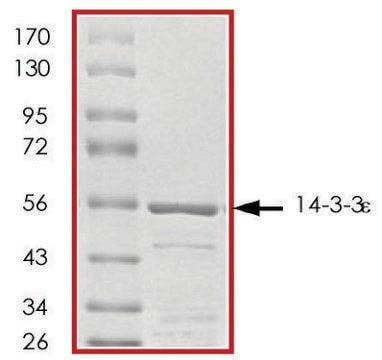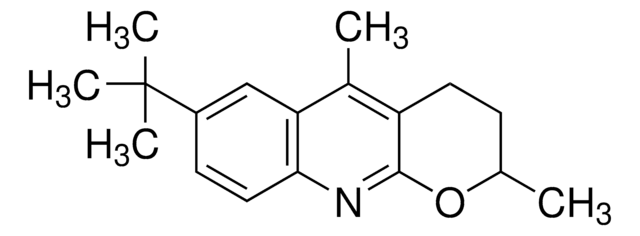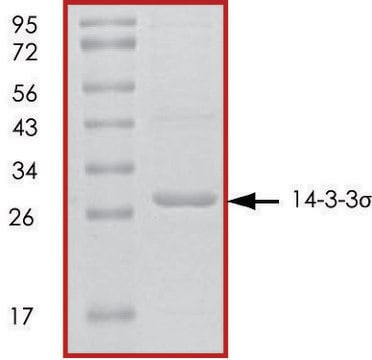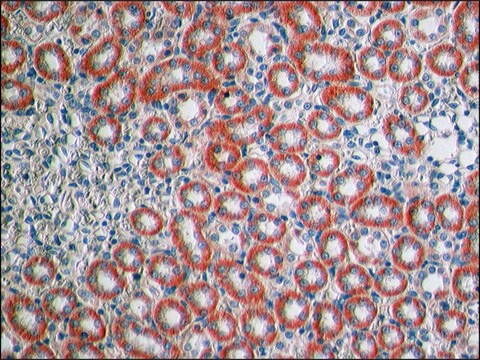推荐产品
生物源
human
重組細胞
expressed in E. coli
化驗
≥70% (SDS-PAGE)
形狀
buffered aqueous glycerol solution
分子量
~56 kDa
NCBI登錄號
應用
cell analysis
運輸包裝
dry ice
儲存溫度
−70°C
基因資訊
human ... YWHAQ(10971)
一般說明
14-3-3θ (also known as tyrosine 3-monooxygenase/tryptophan 5-monooxygenase activation protein, theta polypeptide) is a member of the 14-3-3 family of proteins which mediate signal transduction by binding to phosphoserine-containing proteins. Through interaction with ASK1, c-jun NH-terminal kinase, and p38 mitogen-activated protein kinase (MAPK), 14-3-3θ plays an important role in controlling apotopsis. Induced expression of 14-3-3θ protein has been reported in patients with amyotrophic lateral sclerosis. Additionally, 14-3-3θ has been observed to mediate nucleocytoplasmic shuttling of the N protein (coronavirus nucleocapsid protein) which causes severe acute respiratory syndrome.
外觀
Supplied in 50mM Tris-HCl, pH 7.5, 150mM NaCl, 10mM glutathione, 0.1mM EDTA, 0.25mM DTT, 0.1mM PMSF, 25% glycerol.
準備報告
after opening, aliquot into smaller quantities and store at -70 °C. Avoid repeating handling and multiple freeze/thaw cycles
儲存類別代碼
10 - Combustible liquids
水污染物質分類(WGK)
WGK 1
閃點(°F)
Not applicable
閃點(°C)
Not applicable
Milan Surjit et al.
Journal of virology, 79(17), 11476-11486 (2005-08-17)
The severe acute respiratory syndrome coronavirus(SARS-CoV) nucleocapsid (N) protein is one of the four structural proteins of the virus and is predicted to be a 46-kDa phosphoprotein. Our in silico analysis predicted N to be heavily phosphorylated at multiple residues.
Jeffrey M C Lau et al.
Molecular and cellular biology, 27(4), 1455-1466 (2006-12-06)
14-3-3 family members are intracellular dimeric phosphoserine-binding proteins that regulate signal transduction, cell cycle, apoptotic, and metabolic cascades. Previous work with global 14-3-3 protein inhibitors suggested that these proteins play a critical role in antagonizing apoptotic cell death in response
我们的科学家团队拥有各种研究领域经验,包括生命科学、材料科学、化学合成、色谱、分析及许多其他领域.
联系技术服务部门








